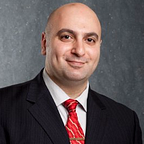Beyond the smartwatch: wearable medical devices go mainstream
Apple, the first trillion-dollar publicly-listed company in the United States, recently unveiled its latest flagship smartphones and smartwatch, with the latter advancing Apple’s push into the wearable mobile health, or ‘mHealth’, market.
Wearable medical devices are here
Apple’s latest smartwatch is an FDA-approved medical device.
It has a built-in electrocardiograph (ECG) that can detect abnormal heart rhythms, specifically atrial fibrillation, a condition associated with significant morbidity and mortality. It is prevalent in around 2 to 4% of the population in developed countries like Australia.
Atrial fibrillation: a significant health issue
In Australia, around 10 to 30% of people with atrial fibrillation are admitted to hospital for heart-related and other health issues each year. Atrial fibrillation and flutter caused 2,218 deaths (six every day) in 2016.
The global prevalence of atrial fibrillation is expected to rise as populations age, with the condition predicted to affect between 6 to 12 million people in the United States by 2050, and 18 million across Europe by 2060.
Detecting falls, saving lives
Apple‘s latest smartwatch can also identify when its wearer experiences a ‘significant, hard fall’, then automatically notifies emergency services and a personal contact if the wearer is unresponsive.
Another potentially life-saving feature, it’s especially useful for the elderly where falls are a significant cause of morbidity, and people affected by impaired gait or one of several medical conditions that can cause unintended falls, including the aforementioned atrial fibrillation, vertigo, epilepsy and other neurological conditions.
Looking at the latest Australian data falls caused the hospitalization of just over 100,000 people (75% female) aged 65-plus during a 12-month period from 2014–15, resulting in 1.5 million days of patient care during that period.
Fall detection: other use cases
Apple’s fall detection feature is also relevant to a wider range of users who partake in recreational activities involving a risk of an accidental ‘hard’ fall, especially solo activities off the beaten track (but they still need to be in the smartwatch’s network range) such as mountain biking, hiking, and trail running.
Innovative employers are also evaluating it as a potential risk management tool for work sites and duties involving an increased risk of accidental falls, such as working from heights or around tripping hazards on construction sites and in industrial plants.
Employers operating remote work sites with a widely-dispersed workforce could find the fall-specific automated emergency alerts especially useful.
New features, new risks
It hasn’t taken long for several experts to point out some of the potential pitfalls and unintended consequences of these new features. For example, a legal expert recently highlighted that Apple’s fall detection feature could get the wearer arrested in certain circumstances.
Others have flagged the potential over-medicalization of atrial fibrillation and the potential health risks (and costs) of unnecessary medical interventions caused by false-positive ECG results, an existing limitation of ECGs that could be magnified by the technical limitations and potential scalability of Apple’s smartwatch.
The (very near) future of mHealth
It looks like Apple’s new smartwatch features were developed with the baby boomers and elderly in mind, a strategic move in the context of aging populations across several developed countries.
Heart problems and accidental falls are also just the beginning of a long list of health issues that will soon be managed (if not already the case) with the help of wearable medical devices.
The clinical effectiveness and regulatory approval process for new medical devices, their commercial viability and affordability to target users are some of the key factors that will determine how long it will take to see evidence of improved health outcomes at the population level.
Apple’s probably already working on new features for its ‘medical smartwatch’, while others are developing a diverse range of medical applications for wearable devices. With the prediction of epileptic seizures and bloodless blood tests among the many innovative developments in the pipeline, the future of mHealth looks to be nothing short of remarkable, and possibly even renaissance-worthy.
The views and opinions expressed in this article are those of the author and do not necessarily reflect the official policy or position of any agency, organization, employer or company.
